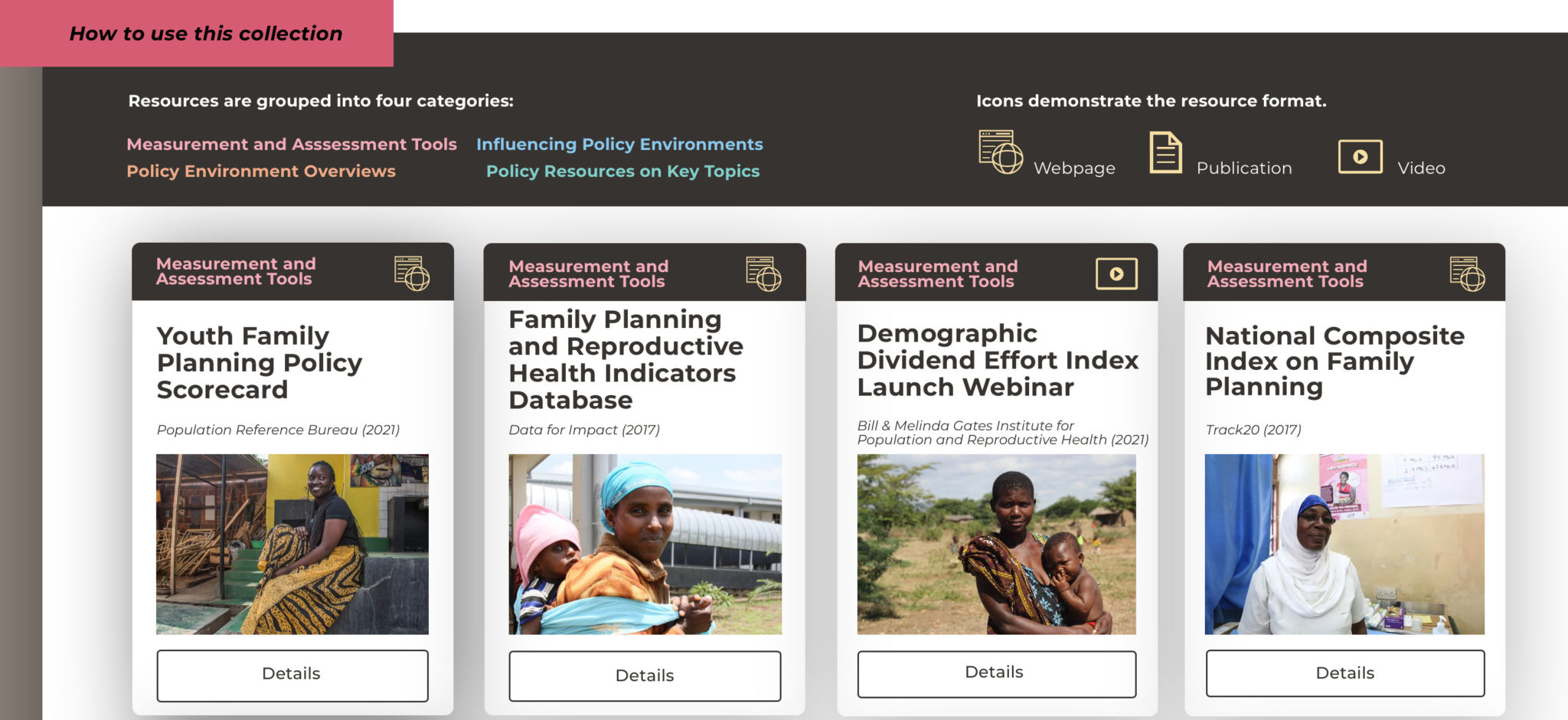Shelley Megquier
Former Program Director

June 13, 2022
Former Program Director
Program Director
PRB’s Empowering Evidence-Driven Advocacy (EEDA) project and Policy, Advocacy, and Communication Enhanced for Population and Reproductive Health (PACE) project are glad to partner with Knowledge SUCCESS to bring you this curated collection of resources highlighting different facets of family planning policy environments.
Family planning policy environments influence contraceptive demand, availability, access, and use. They shape options and opportunities for the nearly two billion women and girls of reproductive age around the world.
Equitable access to quality, voluntary family planning can transform the lives of women, families, and the development of nations. The policy environment within which all family planning programming, either private or public, occurs is complex and multifaceted. Enabling aspects of a policy environment can support access to and use of family planning. Restrictive aspects inhibit access to and use of family planning for certain groups of people or in certain situations.
By gathering and disseminating evidence-based, actionable information, like the resources included in this 20 Essentials collection, we can help to ensure that more women and families are supported by policy environments that enable their access to and use of family planning.
EEDA, PACE, and Knowledge SUCCESS used simple selection criteria to collaboratively create this collection of resources. To be included in this collection, a resource had to be:

This collection of essential resources is for family planning program planners, implementers, decisionmakers, and advocates who work within and seek to understand and influence family planning policy environments. The collection provides tools to measure and/or assess policy environments, approaches that explain how to influence family planning policy environments, and resources to enable better understanding of key policy topics.
Resources are grouped into four categories:
Each entry includes a short summary describing the resource and a statement on why we consider the resource to be essential. Enjoy the collection and let us know what you think.
This blog was originally published by Knowledge SUCCESS. It is lightly modified and reproduced here with permission.
